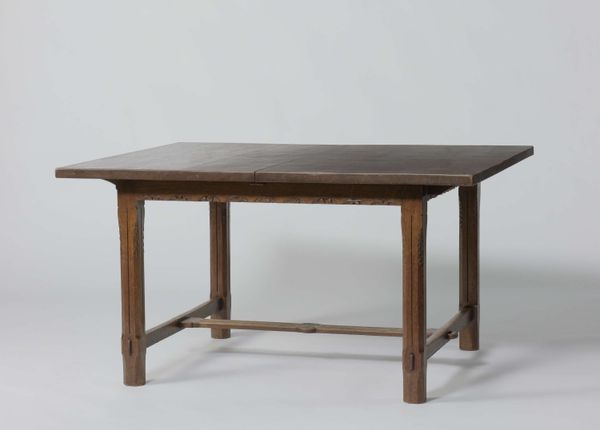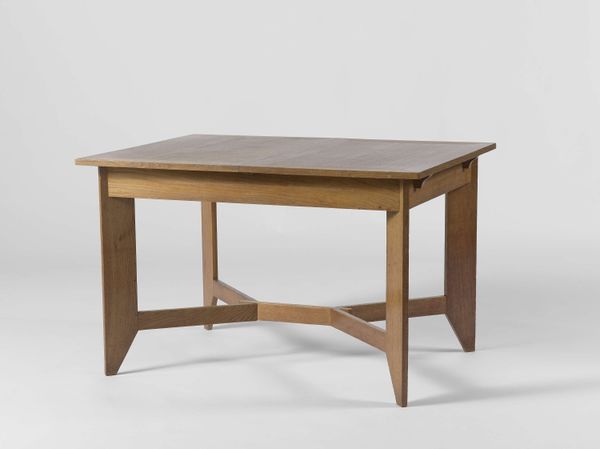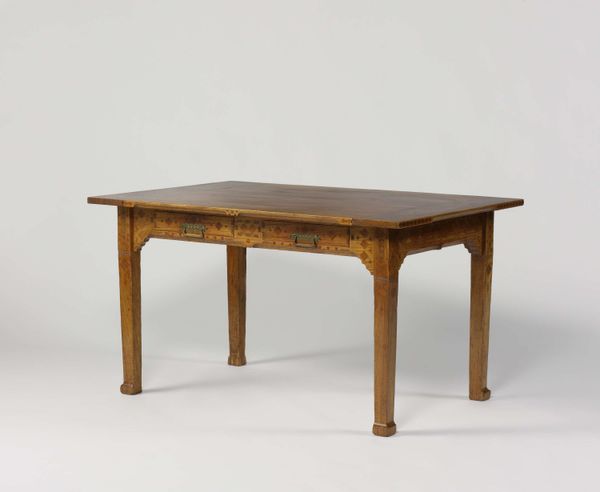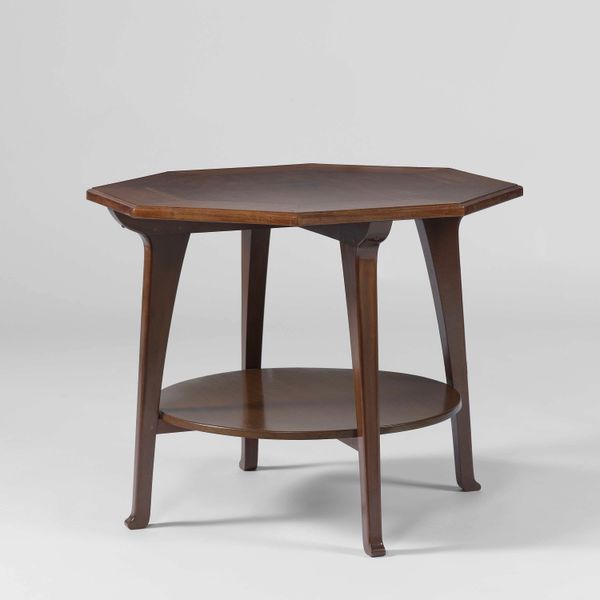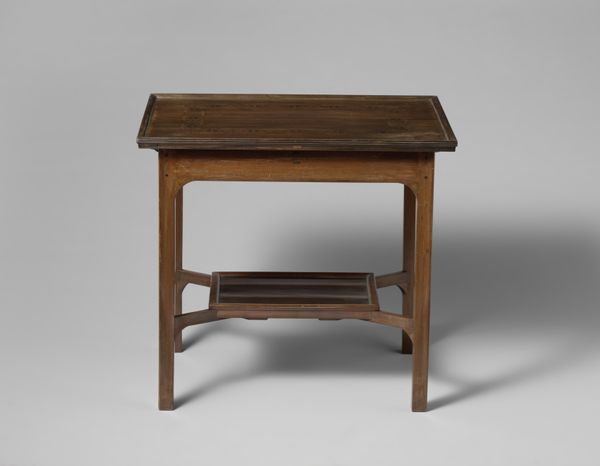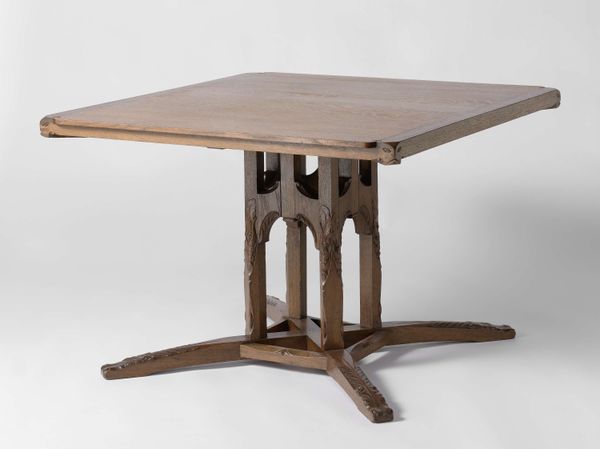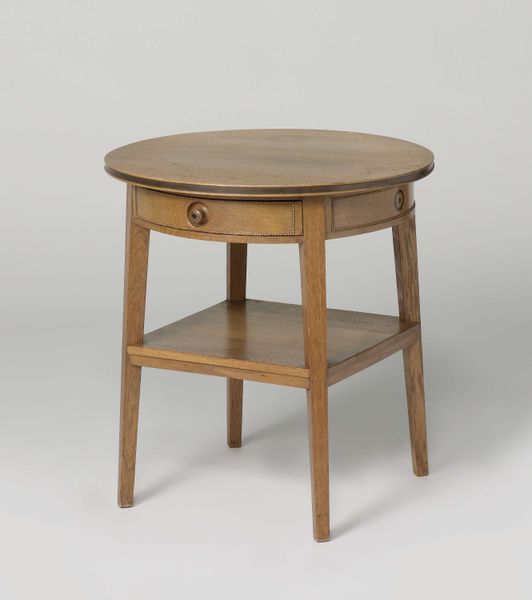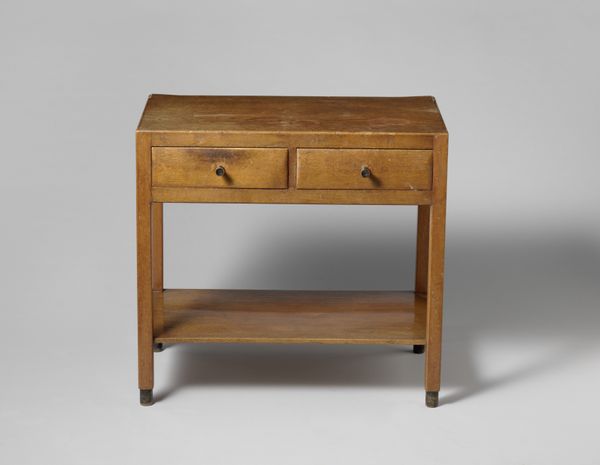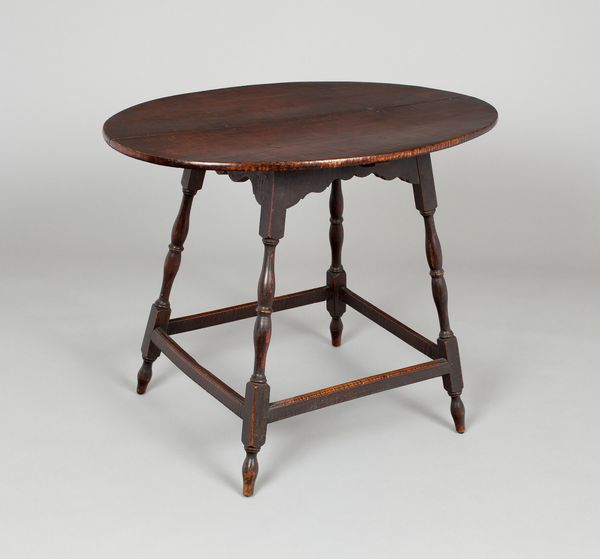
wood
#
furniture
#
wood
#
decorative-art
Dimensions: 40.6 × 61 × 33 cm (16 × 24 × 13 in.)
Copyright: Public Domain
Curator: Welcome. Here we have a “Stool,” an intriguing piece whose origins trace back to the years 1817 to 1837. While the maker remains anonymous, the artifact itself is a testament to a time of craftsmanship, housed right here at the Art Institute of Chicago. Editor: Immediately, the worn surface tells a story. Its muted colors and the way the wood grain is visible create an impression of quiet, humble domesticity. Almost austere, really. Curator: Indeed. The unassuming design, characteristic of the decorative arts style of the period, presents a unique window into early 19th-century American life, where objects were not just functional but also embodiments of cultural values. The simplicity speaks volumes, don't you think? Editor: Absolutely. And think about who might have used this stool. Was it a farmer resting after working the fields? A child reaching for something on a high shelf? Objects like these connect us to a tangible past, but I wonder, whose stories are highlighted by preserving furniture over people? Does displaying it divorce it from a broader history of, perhaps, exploited labor or restrictive gender roles? Curator: An interesting thought. Every object does carry echoes of the society that created it. Perhaps we can look at its three legs as representing the Holy Trinity, stability, but also inherent imbalance… after all, isn’t three sometimes an awkward number? Editor: That’s an intriguing reading. For me, the stool represents more of a practical, pragmatic functionality, reflective of the resourcefulness and survival skills prioritized on the margins of mainstream society. Consider also the material itself. The patina on the wood could symbolize both wear and preservation, embodying the cycles of labor, endurance, and renewal, right? Curator: A cyclical, yet still enduring history... A beautiful sentiment, really. It seems even a simple object such as this can act as a vessel filled with diverse histories and interpretations, from theological echoes to the very grounding labor from which its origins rose. Editor: Exactly. And that’s what makes objects such as these invaluable; not as isolated entities, but as starting points for dialogues that connect our past and present, offering space to critically engage with societal narratives.
Comments
No comments
Be the first to comment and join the conversation on the ultimate creative platform.
